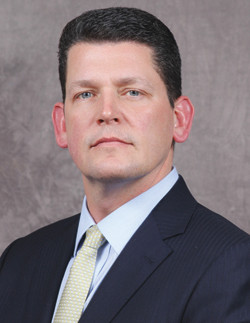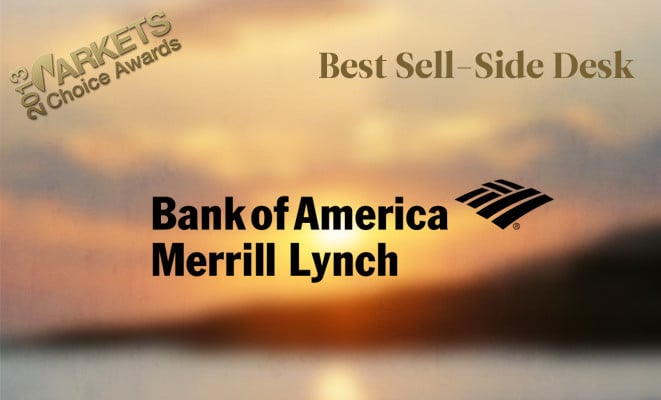Amid lower volumes, market participants are understandably concerned about how readily, and at what cost, they can find other sides for their trades. For Bank of America Merrill Lynch clients, the answer may lie inside the firm’s four walls.
“The overwhelming thing we’re hearing from clients is the need for liquidity and understanding liquidity,” said Jason Crosby, global head of portfolio products at Bank of America Merrill Lynch. “We’re trying to help clients understand not only the liquidity of the markets, but also the liquidity of our organization.”
Crosby cited three pillars to BoAML’s electronic-trading business: strategies, knowledge, and liquidity. “With strategies, we focus on what is important to client, whether it’s the performance of our algos, understanding liquidity profiles or the toxicity of liquidity sources, and market signals,” Crosby told Markets Media. “Our platform is very trader-oriented.”
 Jason Crosby, global head of portfolio products at Bank of America Merrill Lynch
Jason Crosby, global head of portfolio products at Bank of America Merrill Lynch
While a fully electronic platform, the Wall Street giant leverages “human trust and relationships” to best determine client’s objectives, according to Crosby. “There is certainly a return of the business to the people who are closest to the client, both the high-touch and electronic sales trader,” Crosby said.
“We find that the frequency, size and complexity of business grow when this partnership is formed,” he continued. “As volumes have decreased year-over-year in the market, clients continue to partner with the firms that provide the essential resources, innovation and ideas to their investment process.”
Regarding knowledge, Crosby said industry conferences typically touch on topics important to the buy side, without opening up the floor for the buy side to speak openly. To help fill this gap, BoAML offers a ‘think tank’ series, convening buy-side traders and portfolio managers for conversations about market issues. The meetings drive much of BoAML’s execution-consulting analyses, Crosby noted.
Liquidity is the third pillar of BoAML’s organizational structure. One pertinent trend the firm’s traders have noticed is that buy-side investors are increasingly looking at single-stock valuations and index-beating opportunities, rather than just beta, or market-matching, investing as had been in vogue since 2009.
On Feb. 4, Bank of America Merrill Lynch introduced Instinct Natural, a global trading platform designed to better execute large trades while minimizing trade friction.
“Being a large organization, the pillars of our clients are more diversified,” Crosby said, defining Instinct Natural as “a natural liquidity profile before any information leaves the four walls of our organization...Our internal alignment and the deep relationships we have with clients will lead to deeper liquidity.”
“We’re trying to help clients understand not only the liquidity of the markets, but also the liquidity of our organization.” Jason Crosby, global head of portfolio products at Bank of America Merrill Lynch
“There are real investors out there who are taking long positions based on fundamental thought processes, and they have challenges,” Crosby continued. “We show them how they can interact with increased liquidity, with trust and technology to aggregate opportunities across our desk.. With the guidance of our clients about how they want to interact with our natural internal repository of liquidity, we’re differentiating ourselves from other sell-side desks.”
BoAML’s electronic team, historically focused on trading, transaction-cost analysis and market structure, is evolving “into a coverage team with a high-touch perspective,” Crosby said. “They can provide a complex solution to a complex problem, using a high-touch platform.”
The rebranding of the BoAML trading platform encompasses defining the firm’s liquidity profile, as well as rebranding its algo suite of products under the Instinct umbrella and focusing on the three pillars of strategy, knowledge and liquidity. Said Crosby, “we’re getting out there trying to be a thought leader not only in market structure, but also in helping our clients navigate the markets. We’re letting the client drive the strategy for us.”














